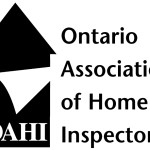
It might not surprise you that I look at homes a little differently than a typical person. While home buyers are looking for items like granite countertops, high ceilings, hardwood floors and stainless steel appliances; Home Inspectors are focused on maintenance, performance, and deficiencies in the home. I believe buyers can benefit by looking at their future investment a little more like a Home Inspector. After you have found the property you are interested in, schedule a walk-through with your realtor to give it a basic examination. If you are not handy, bring along a friend or family member who is a tradesman or is knowledgeable about homes. I would recommend taking a flashlight, binoculars, and a notepad.
This exercise is of course not a replacement for a professional Home Inspection. It is simply to help you have some understanding of the condition of the property before you make an offer. If you decide to put in an offer, your Home Inspector will provide guidance on each deficiency and a contractor can provide the approximate cost for any repairs.
Exterior
The first thing I notice when I arrive at a property is not the house at all, it’s the landscaping. I’ve learned over the years that homeowners who maintain their lawns and gardens are typically the type who maintain their homes. This provides me a rudimentary understanding of how the inspection will go.
I recommend you make two trips around the exterior of the house. Pay close attention to how the house sheds water and note any locations where water appears to pool next to the foundation. Check that the downspouts are fastened properly and are about 4 to 6 feet from the foundation. If the downspouts are excessive in length it can indicate a past leak in that location. Look at the masonry/mortar for signs of deterioration or significant cracking. Check the top portion of any masonry chimneys as they are commonly deteriorated. Look at the foundation for crumbling or large cracks exceeding 5 mm in width. If the home has wood windows, doors, or siding; make sure the paint is in good condition and look for wood rot in the bottom corners of the frame and casing. Now take a step back and use the binoculars to look at the roof and shingles. If the shingles look curled and deteriorated they will most likely look worse up close. Also look at the roof lines, exterior walls, and chimney for leaning, sagging, or bowing.
Heating & Cooling
You can tell a lot about the major equipment by its age. If the furnace, AC, or water heater data plates are accessible, write down the serial number and brands. You can use the Building Intelligence Center website to determine their manufacture date. While older equipment is not a sign of a bad house, it’s good to know what you may need to budget for.
Typical Lifespans:
- High Efficiency Furnace 15 to 20 years
- Mid Efficiency Furnace 18 to 25 years
- Air Conditioner 12 to 15 years
- Water Heater 8 to 12 years
Basement
Walk around the outside basement walls and look closely at the trim, drywall, and floors. If there is water stains, mould, or damage there may be a moisture problem. Remember to pay particularly close attention to the areas where the grading or downspouts were poor on the exterior of the house. If there is a strong musty smell it could also indicate moisture problems.
If the basement is unfinished look for wood rot where the joists and beams meet the foundation and at the bottom of any wood columns. The foundation wall insulation should be at least to the frost line, which is typically about half way down the foundation.
Inside the Home
When walking through the home pay close attention to both the ceilings below the bathrooms and the top floor of the house for signs of water damage. Check below the windows for pealing or bubbling paint which can indicate leaks. Operate at least one window and inspect the seals. Look very closely at the shower and bath enclosures for their general condition and water tightness.
No Home Is Perfect
A homebuyer should look for homes with realistic expectations. If you are buying a 12-15 year old home, let’s face it, you may need new shingles. If you are buying a 70 year old home, you may have to update some plumbing or electrical. Don’t let this scare you away from a perfectly good home.
When you consider the life cycle of every component of a house, a reasonable annual estimate of the cost of normal maintenance is 1% of the value of the house. One year you may replace the furnace; a few years down the road you may re-surface the roof. Throw in the odd unexpected repair and you will average 1% per year. It’s incredible but this rule is not far off, both for very expensive and inexpensive homes.


